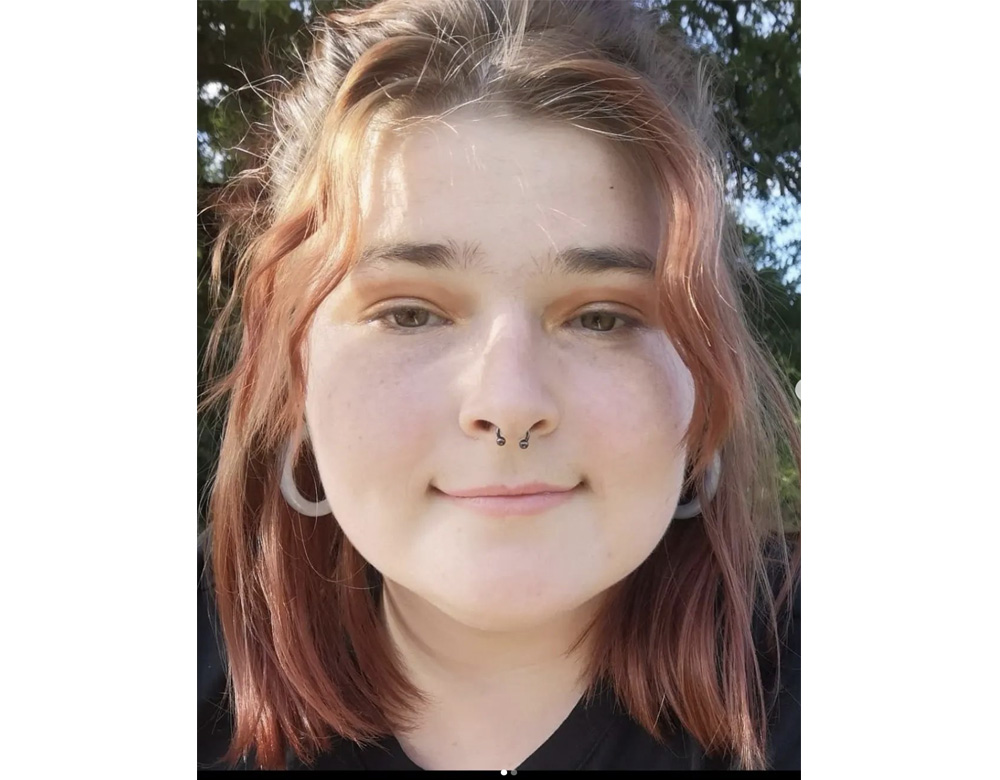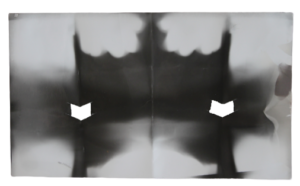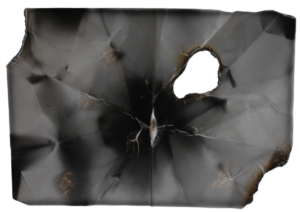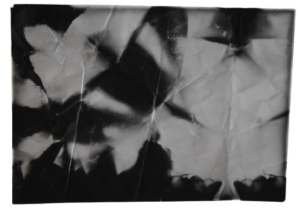Carly Maling
Your discipline: Mixed Media.
Your education:
BA (Hons) Print and Time Based Media, UAL Wimbledon College of Art, 2019.
MA Photography, Falmouth University, 2022.
Currently studying: PGCE Art and Design, Goldsmiths.
Describe your art in three words: Experimental, playful, narrative-based.
Website
What inspired the concept of “Origami Pinhole”? How did you come up with the idea of using photographic paper in this unique way?
My early work was very performance-based. A lot of the work I was creating was still based in storytelling but in the more stereotypical sense. And a lot of the work I was creating was rooted in spoken word. But I wanted to break out from that and start exploring ways of taking the performance concepts I was working with and applying them to more traditional art forms – drawing, painting, printmaking.
At the time, I remember I was working on a performance where each movement I made was centered around a particular set I designed. But the set was actually tape on the floor (in the shape of a house) that dictated my movements depending on how my character felt at the time. There was a lot of research involved, and I can’t remember the particulars, but it all boiled down to how each mark and shape I made out of tape related to different emotions. For example, a broken staggered line was meant to convey a sad emotion.
So I ended up taking that idea and applying it to photographic paper in the darkroom.
Can you describe the process of creating an “Origami Pinhole” piece? What challenges do you face while working on these pieces?
Once I got the theory down, the process was fairly straightforward. I’d take a piece of photographic paper and do an action with it. And every time, I would have to ensure that the chemical side was being folded in on itself. So, I would either be scrunching it up, folding it, or tearing the paper in on itself. Cutting a very small hole for the light to go through (usually in a corner). Putting the paper in a tray, running outside – for at most 30 seconds. And then going through the developing process.
The greatest challenge was figuring out how long to expose each piece to light for. A lot of the first pieces I created came out entirely black because I was outside for too long.
 What’s next for you in your creative journey? Are there any new projects or ideas you’re excited to explore?
What’s next for you in your creative journey? Are there any new projects or ideas you’re excited to explore?
This body of work was created all the way back in 2017 when I was in the first year of my first degree. Since then, I’ve gone on to do a lot of different things. But at the moment, I’m really focused on teaching while starting to build up stock for craft fairs. I’ve spent a long time working on stuff for other people, so it’s going to be great striking out on my own.
Can you tell us more about your journey into the creative industry? How did you start working in such diverse creative roles?
Honestly, it’s been out of necessity. I got made redundant from my role at Laura Ashley very early on in the pandemic. Then the industry completely shut down, and I really struggled to get any other work in a photography studio. So, I just had to adapt. And quickly. I found that a lot of the accessible work was in marketing. So I started writing more and asking people I knew for paid work. It was okay for a while, but the further I got, the more I found it wasn’t for me.
I’m a visual person. And unless I really know what I’m talking about, I find it incredibly difficult to put things into words. After one burnout too many, I finally realized it was time to make a considered change away from freelancing. I’ve been teaching in some capacity for a while. I’ve spent the past year working as a teaching assistant at Ashcroft Technology Academy. Before that, I worked at several summer camps and youth care homes, which I thoroughly enjoyed. However, I always felt that the creative aspect was missing. So, I suppose art teaching has been the more natural fit for me.
What role does teaching play in your life now, and how has your varied career influenced your approach to education?
I’ve always been really passionate about trying to provide opportunities for young people. I spent a large part of my youth as part of a group called ART31, where we would band together to create social change in an area where the arts were underdeveloped. I found myself talking to the local council about how more young people should have more opportunities to be involved in the arts. I got to work with the arts council on a few projects, which eventually led to me taking part in the Margate Bookie Young Producers programme, where I got to lead on my own exhibition turned art festival for a few years with the same focus in mind.
But trying to run your own business, company, festival, exhibition, or whatever alone is incredibly difficult. Especially while working full time alongside it. So, I decided to pull the plug on that and bring all of my learning from these experiences into a new full-time teaching career.
As a neurodivergent artist, how has your experience shaped your creative process and the projects you choose to work on?
Honestly, in the past, I’ve put my neurodivergence to the side. Employers have become a lot more inclusive in recent years. But when I first started out, I felt like I had to hide that part of myself, which only caused problems for me later down the line. So, now I’ve learned to prioritize myself and only take on projects that serve me well as a person.
LinkedIn influencer Ellie Middleton says it best. She’s a very clever person, but she spent so long working in corporate roles, which only led to her having meltdowns and being unable to focus. But at the time, she didn’t know why she was the way that she was. Eventually, she got an ADHD diagnosis and then changed her career and life to suit her needs. The body has this weird way of showing you how you really feel, even if your brain tries to ignore it.





Leave a Reply
You must be logged in to post a comment.